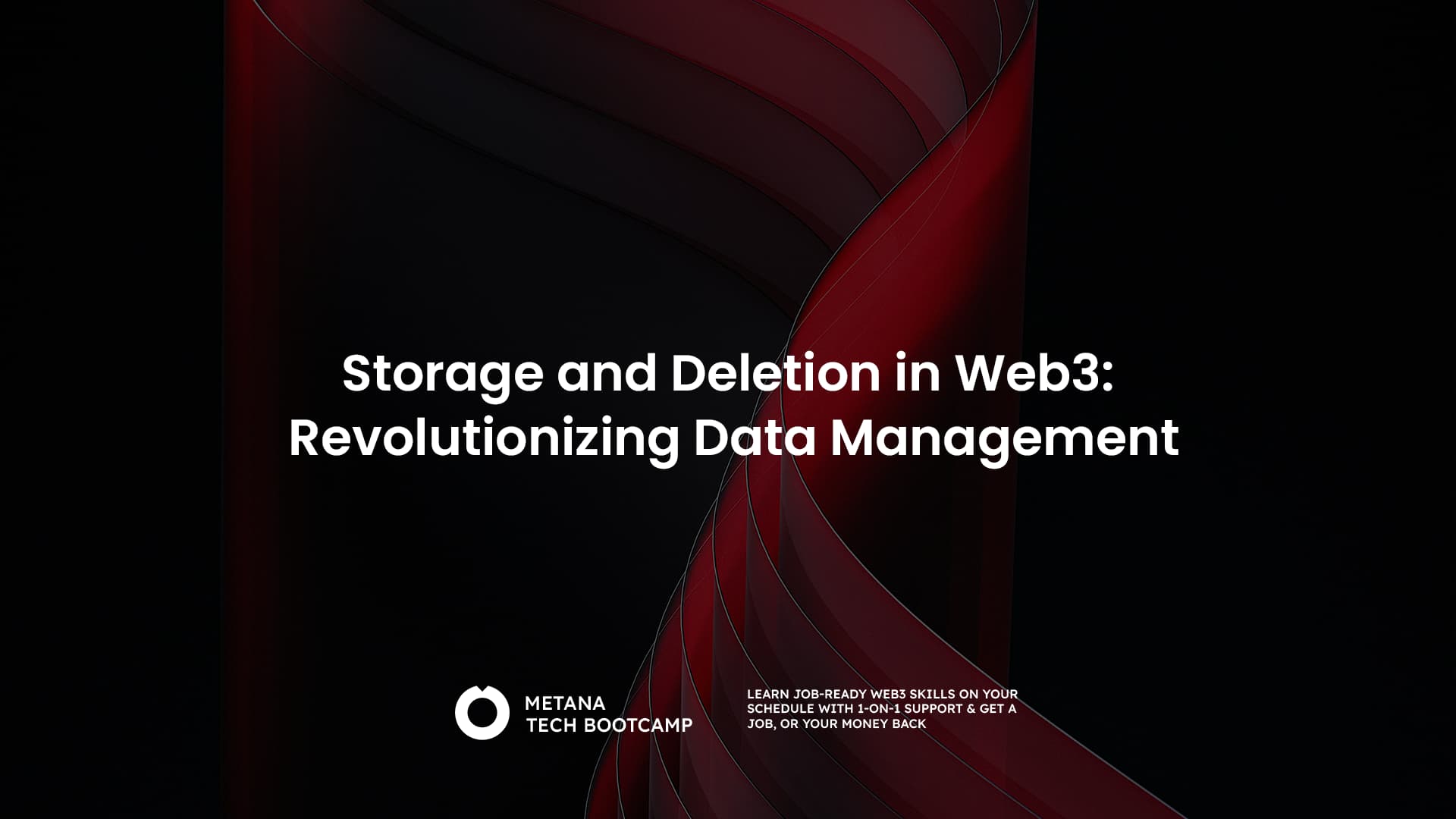Web3 thrives on the immutability of the blockchain – a guarantee that once data is written, it cannot be altered or erased. This permanence is a core strength, fostering trust and transparency. However, for developers, it presents a unique challenge: Storage and Deletion in Web3.
The Ever-Expanding Ledger
Imagine a decentralized application storing user data, transaction history, and application code on the blockchain. Over time, this data accumulates, leading to:
- Bloated Blockchains: As data grows, the blockchain size increases, potentially impacting scalability and transaction speeds.
- Storage Costs: Storing data on-chain can be expensive, especially for frequently updated information.
The Deletion Delusion
While data cannot be truly deleted from the blockchain, there are workarounds:
- State Channels: These are off-chain channels where transactions occur, with only the final state being recorded on-chain, reducing on-chain storage needs.
- Data Availability Layers: These protocols store data off-chain but leverage the blockchain to prove its existence and retrievability, offering a balance between cost and accessibility.
Real-World Considerations
Here are some examples of how storage and deletion are tackled in Web3:
- IPFS Integration: Projects like Filecoin leverage the InterPlanetary File System (IPFS) for off-chain data storage, with blockchain pointers referencing the location.
- Optimism Rollups: This Layer 2 scaling solution allows for cheaper transactions and state updates, with only finalized data being committed to the Ethereum mainnet.
Navigating the Storage Maze
To make informed decisions about storage and deletion, Web3 developers should:
- Data Classification: Classify data based on its criticality and update frequency. Less critical or frequently changing data can be stored off-chain.
- Storage Optimization: Utilize techniques like data compression or sparse storage to minimize the on-chain footprint of essential data.
- Future-Proofing: Consider solutions that offer scalability and cost-efficiency as your project grows and data volume increases.
Understanding Storage in Web3
Storage in Web3 involves recording data on a blockchain. This data is immutable, meaning once it’s recorded, it cannot be altered or deleted. This feature ensures transparency and trust in decentralized applications (dApps), but it also presents unique challenges.
Storage Costs
Storing data on-chain can be expensive. Each byte of data stored on the Ethereum blockchain, for example, incurs a gas fee. The cost can add up quickly, making it impractical to store large amounts of data directly on the blockchain.
Example: Storing Data on Ethereum
Here’s an example of how to store data on the Ethereum blockchain using Solidity:
pragma solidity ^0.8.0;
contract StorageExample {
string public data;
function setData(string memory _data) public {
data = _data;
}
function getData() public view returns (string memory) {
return data;
}
}
In this example, we’re storing a single string of data on the blockchain. While this is simple and straightforward, it can become costly with larger amounts of data.
Off-Chain Storage Solutions
Due to the high costs associated with on-chain storage, many developers opt for off-chain storage solutions. These solutions store data off-chain but use the blockchain to reference or verify the data.
IPFS (InterPlanetary File System)
IPFS is a distributed file system that allows for the storage and sharing of data in a decentralized manner. IPFS provides a content-addressed storage model, where files are referenced by their hash.
Example: Storing Data on IPFS
Here’s an example of how to store data on IPFS and reference it from a smart contract:
- Upload Data to IPFS: Use an IPFS client to upload your data and get a hash.
- Store the Hash on the Blockchain:
pragma solidity ^0.8.0;
contract IPFSStorage {
string public ipfsHash;
function setIPFSHash(string memory _ipfsHash) public {
ipfsHash = _ipfsHash;
}
function getIPFSHash() public view returns (string memory) {
return ipfsHash;
}
}
In this example, we’re storing the IPFS hash on the blockchain, which can then be used to retrieve the data from IPFS.
Data Availability Layers
Data availability layers are protocols that store data off-chain but leverage the blockchain to prove its existence and retrievability. These protocols strike a balance between cost and accessibility.
Example: Using a Data Availability Layer
One approach is to use a Layer 2 solution like Optimism Rollups, which allows for cheaper transactions and state updates by processing them off-chain and committing only the finalized data to the Ethereum mainnet.
Strategies for Efficient Storage and Deletion
Data Classification
Classify your data based on its criticality and update frequency. Data that is less critical or changes frequently can be stored off-chain, while essential data can be stored on-chain.
Storage Optimization
Utilize techniques like data compression or sparse storage to minimize the on-chain footprint of essential data.
Example: Compressing Data
You can compress data before storing it on-chain to save space and reduce costs. Here’s an example in JavaScript:
const zlib = require('zlib');
let data = 'This is some data that we want to compress';
let compressedData = zlib.deflateSync(data).toString('base64');
console.log('Compressed Data:', compressedData);
Future-Proofing
As your project grows and data volume increases, consider solutions that offer scalability and cost-efficiency.
Conclusion: Storage and Deletion
This topic in Web3 present unique challenges and opportunities. While the immutability of blockchain data ensures trust and transparency, it also requires developers to think strategically about how and where they store data. By leveraging off-chain storage solutions, data availability layers, and optimization techniques, developers can create efficient and scalable dApps that balance cost and performance.
Understanding these concepts and implementing best practices will help you navigate the complexities of storage and deletion in Web3, ensuring your decentralized applications remain efficient, cost-effective, and scalable.
FAQs:
What is Web3 data management?
- Web3 data management involves decentralized methods for storing and deleting data, leveraging blockchain technology for enhanced security and privacy.
How does Web3 improve data storage?
- Web3 improves data storage by using decentralized networks, reducing reliance on central servers, and increasing data integrity and security.
What are the benefits of decentralized data deletion?
- Decentralized data deletion ensures that data removal is verifiable and transparent, enhancing user trust and compliance with privacy regulations.
How does blockchain support Web3 storage?
- Blockchain supports Web3 storage by providing a secure, immutable ledger that records and verifies all data transactions in a decentralized manner.
What role do smart contracts play in Web3 data management?
- Smart contracts automate and enforce data management rules within decentralized applications, ensuring secure and efficient data handling.
Is Web3 data management scalable?
- Yes, advancements in blockchain technology and decentralized protocols are continually improving the scalability of Web3 data management solutions.
How does Web3 compare to traditional data management?
- Web3 offers greater security, transparency, and user control compared to traditional centralized data management systems.
What challenges does Web3 data management face?
- Challenges include regulatory compliance, technical complexities, and ensuring interoperability between different decentralized systems.








